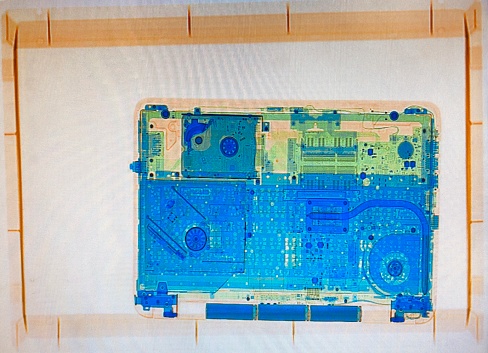If your ferret develops an adrenal tumor, you need to know how to treat it. There are several treatments, including medicine and surgery. Both options will reduce the production of sex steroid hormones in the body. However, surgical treatments will remove the adrenal gland, while medical treatments do not. It is important to consider your pet’s health, finances, and quality of life before deciding on which treatment is right for him or her.
How do you treat adrenocortical disease in ferrets
Adrenocortical disease is a common problem in ferrets. It can be caused by a number of factors, including genetic tendencies found in the breeding population, exposure to unnatural light and dark cycles, and dietary connections. Early diagnosis and treatment can slow the progression of the disease and extend the life of affected ferrets.
The most common symptom of adrenal disease is hair loss. The hair may fall out in a random pattern. The vulva in female ferrets is often enlarged, while the prostate in male ferrets can swell and bacterial prostatitis can develop. Severe prostate enlargement can block the urine, making it difficult for ferrets to urinate. Some ferrets can also become aggressive toward other ferrets.
Adrenocortical disease in ferretes occurs due to early altering, usually before five weeks of age. As a result, the adrenal glands start producing too much cortisol and other hormones that are not needed by ferrets. The production of too much cortisol leads to adrenal degeneration and can cause tumors. Stress is also a possible cause of this condition. Artificial lighting and caging can cause stress and overwork the adrenal glands, which is detrimental to the health of the animal.
Can a ferret live with adrenal disease?
Adrenal disease is a common problem for pet ferrets, especially those that are older than three years of age. It affects the adrenal glands, which are located near the kidneys. The adrenal glands are responsible for hormone production. This condition may be benign or malignant. In either case, the affected ferret can live for two or three years after the symptoms start.
The most effective treatment for adrenal disease in ferrets is an implant made with deslorelin. This medication controls the disease without the need for anesthesia or surgery. It is also much less expensive than surgery. The implant lasts 16 to 18 months, and it can be repeated if the first one doesn’t work.
If your ferret is experiencing symptoms, you need to consult a veterinarian right away. Your vet will check for other problems, including low blood sugar and abnormally high levels of steroid hormones. Your veterinarian will also perform X-rays, which can reveal cysts in your ferret’s genital tracts and enlarged liver and spleen. If you suspect that your ferret has adrenal disease, you should take him to the veterinarian immediately. If your ferret is not responding to any treatment, the vet may need to remove the affected adrenal glands, or suppress the overproduction of certain hormones in the body.
What causes adrenocortical disease in ferrets?
Adrenal disease affects the functioning of the ferret’s adrenal glands, small organs found near each kidney. These glands produce hormones called cortisol and estrogen, as well as sex hormones. However, in ferrets with adrenal disease, the portion of the adrenal gland that produces sex hormones goes haywire. While veterinarians do not know exactly why this happens, they do know that genetics and excessive light exposure may play a role in the occurrence of this disease.
The cause of this disease is unknown, but a malfunctioning adrenal gland can result in various behavioral and health problems in the animal. This disease usually affects older ferrets in North America. It is characterized by elevated cortisol levels, which are not normal.
Treatment options for ferrets with adrenal disease include medications and surgical intervention. The choice of treatment depends on the severity and duration of symptoms in the affected animal. The veterinarian and pet owner will discuss the risks and benefits of each option before deciding on the course of treatment.
What does adrenal disease look like in ferrets?
A ferret with adrenal disease will have hair loss and an itchy, dry skin. Hair loss will often begin at the tail and progress up the body. In severe cases, the pet may even be nearly bald. Additionally, the animal will have difficulty urinating and may have repeated urinary tract infections.
Treatment options for ferrets with adrenal disease include medical management and surgery. The veterinarian and pet owner will decide which treatment is right for your pet. They will take into consideration the ferret’s age, symptoms, other conditions, and affected glands. Additionally, they will consider whether the owner wants to control or cure the disease, and if they are comfortable with the risks involved.
The most common symptom of adrenal disease in ferrets is hair loss, which may be associated with pruritus. Some affected female ferrets will also experience an enlarged vulva, which is caused by a buildup of reproductive hormones in the adrenal glands. Additionally, affected male ferrets will likely have difficulty urinating due to prostate enlargement. An enlarged spleen is another sign of adrenal disease in ferrets.
What are signs and symptoms of an adrenal crisis?
One of the first symptoms of an adrenal crisis is hair loss. Some ferrets may also develop a shiny, oily coat. Female ferrets can also develop a swelling in the vulva and discharge. Male ferrets may also experience difficulty urinating. These symptoms should be taken seriously and your ferret should be examined by a veterinarian.
The adrenal glands are tiny organs located near the kidneys. They produce the hormones cortisol and adrenaline, two of which are important for the body. However, in a ferret with adrenal disease, only part of the adrenal glands function normally. This may be due to excessive light exposure, genetics, or both.
Adrenal disease can be difficult to diagnose without a thorough exam. If the symptoms are too subtle to be detected, a vet may perform an ultrasound to identify the enlarged adrenal gland. However, this test cannot accurately diagnose the condition. If the vet finds a symptom, she can perform an exploratory surgery. While exploratory surgery is costly, it offers a better chance of a correct diagnosis.
How do you diagnose adrenal disease in ferrets?
Adrenal gland disease in ferrets is a common disorder. It can be diagnosed with a physical examination and diagnostic tests. There are several therapies for this condition. It is important to identify the symptoms as soon as possible. A veterinarian can provide more information on this condition and the treatment options available.
Symptoms of adrenal disease in ferrets include enlarged adrenal glands, hair loss, and enlarged vulva. Abdominal ultrasound can be used to rule out other diseases and confirm the diagnosis. Ultrasound can also help detect other abnormalities in the abdominal area, such as an enlarged adrenal gland.
Treatment options for adrenal disease include medical and surgical management. Drug therapy can help manage symptoms, but it is not a cure. Medications are only effective for a short period of time. The most common medications used are GNRH agonists, which are used to suppress the production of sex hormones. Other therapies for this condition include injecting melatonin and providing the affected animal with heated beds.
How do I know if my ferret has insulinoma?
Insulinoma in ferrets is a metabolic disease that affects the way that their body uses nutrients. It can be delayed in its onset by feeding your ferret a meat/poultry-based diet and minimal amounts of plant ingredients. Ferrets are small, but the small amounts of carbs in their diets can add up.
A blood glucose test can help diagnose this condition. Your veterinarian will perform blood glucose testing on your ferret at least twice a year. The results of these tests should be repeated every four to 12 weeks to monitor the condition. If you suspect your ferret may have insulinoma, make sure to take him or her to the veterinarian as soon as possible.
Symptoms of insulinoma will increase over time. An exploratory surgery may be performed in order to remove the nodule. A portion of the nodule can be sent to a pathologist for further evaluation.
What can Addison’s disease mimic?
Addison’s disease is a condition in which the adrenal glands fail to produce enough cortisol or aldosterone. These hormones control the body’s processes, including metabolism, growth, and blood pressure. The condition can occur at any age, although it is most common among people in their 30s and 50s.
Addison’s disease can mimic symptoms of other disorders, including intrinsic gastrointestinal disease or an occult malignancy. Genetic disorders account for a small percentage of cases of Addison’s disease. Patients with unexplained hypotension and a low baseline ACTH should be evaluated for this condition before considering another disorder.
A typical Addison’s disease case involves a range of symptoms and lab abnormalities. Identifying the correct diagnosis can save a patient diagnostic work up and improve their quality of life.



